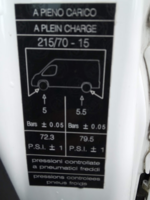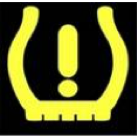Jenrai
Full Member
- Messages
- 598
So to resurect this topic again 
Had new tyres fitted at the rear (BfGoodrich) and adjusted the pressure to the recommended by BfGoodrich but now my TPMS is going crazy every time I start the van. Unlucky for me I have a Citroen Relay based van and the TPMS has no user reset function or learning algorithym. I have contacted my local Citreon van centre who are looking into the issue. The person I spoke to thinks that the tyre pressures are set in the ECU.
I have also sent a long email to Wildax, the converters who should have solved this at stage 2. So I have a sticker on the door post which reads 5.5 bar front and rear and the TPMS telling me the pressure is to low and an MOT due this year.
Does anyone have any thoughts on where we stand legaly and on insurance if the vehicle has stated pressure but running under that. I can't help thinking that running over pressure is just as dangerous.
Sorry for the wall of text.
Jenrai
Had new tyres fitted at the rear (BfGoodrich) and adjusted the pressure to the recommended by BfGoodrich but now my TPMS is going crazy every time I start the van. Unlucky for me I have a Citroen Relay based van and the TPMS has no user reset function or learning algorithym. I have contacted my local Citreon van centre who are looking into the issue. The person I spoke to thinks that the tyre pressures are set in the ECU.
I have also sent a long email to Wildax, the converters who should have solved this at stage 2. So I have a sticker on the door post which reads 5.5 bar front and rear and the TPMS telling me the pressure is to low and an MOT due this year.
Does anyone have any thoughts on where we stand legaly and on insurance if the vehicle has stated pressure but running under that. I can't help thinking that running over pressure is just as dangerous.
Sorry for the wall of text.
Jenrai


